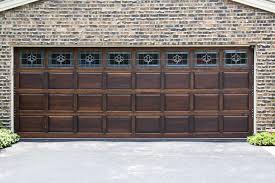Strategies to Choose the Right Garage Door Color to Match Your Style
The color of your garage door heavily influences the value of your property. The perfect shade distinguishes your house from others. Your garage door takes up to thirty percent of your home’s front view. This makes it a critical design element that deserves careful thought.
A1 Garage Door Installation Service understands that selecting the perfect color involves more than just matching paint swatches. Let’s walk you through the art and science of choosing a garage door color to complement the architecture of your home.
Understanding Color Psychology in Home Design
Colors shape our emotional responses in ways that go far beyond simple aesthetics. Understanding these psychological impacts can guide you toward choices when selecting your garage door color.
The cool color tones like soft blues and greens evoke feelings of tranquility. It makes them excellent choices for creating an inviting entrance. Deep blues have long been associated with stability and trustworthiness. It explains their enduring popularity among traditional homeowners seeking to convey permanence.
Warm earth tones tap into our innate connection with nature, radiating comfort that can make your home feel more approachable. These subtle psychological effects extend beyond personal preferences to influence how visitors and passersby perceive your property.
Rich browns suggest strength and dependability. The subtle gray tone projects sophistication. You can select a garage door color that creates the exact emotional response by considering these emotional associations.
Matching Your Home’s Architectural Style
Each architectural style has its own color harmony rules. Colonial homes shine with classic whites and soft creams that honor their historical roots. Modern homes make bold statements with deep charcoals and pure blacks. Mediterranean styles come alive with warm terracotta and sand tones that echo their sun-soaked origins. Your garage door color should speak the same design language as your home’s architecture.
Working with Your Home’s Existing Colors
Start by studying your home’s fixed elements. Your roof shingles, brick or stone facades, and window trim create a color foundation you can’t ignore. Take photos of your home at different times of the day. Morning and evening light changes how colors appear. Pick a door color that looks good in all lighting conditions. This attention to detail prevents expensive color mistakes.
Climate Considerations in Color Selection
Your local weather affects more than just paint durability. Light colors reflect heat – ideal for sunny southern exposures. Northern homes can handle darker shades without overheating. Coastal homes face unique challenges from salt and sun exposure. Pick colors that work with your climate while meeting your style goals.
Creating Visual Balance through Color
Your garage door shouldn’t steal attention from your front door. Instead, they should work together to create a balanced facade. Consider a subtle neutral for your garage if your front door sports a bold red. When using matching colors on both doors add interest through different hardware finishes. Small details make big impacts on overall design harmony.
READ MORE : Critter Vibes The Ultimate Guide to Happy and Healthy Pets
The Impact of Size on Color Choice
Larger garage doors need careful color consideration. Dark colors make big doors seem even bigger, while light shades help them blend in. Double-wide doors look best in subdued tones that don’t overwhelm your home’s proportions. Single doors offer more flexibility letting you experiment with bolder color choices.
Neighborhood Context and Resale Value
Look around your neighborhood for color inspiration. While you don’t need to copy your neighbors, maintaining harmony helps property values. Extreme color choices might limit future buyers. Strike a balance between personal style and market appeal. This approach protects your home’s value while expressing your taste.
Material and Texture Considerations
Different garage door materials take color differently. Steel doors offer unlimited paint options with excellent durability. Wood doors limit you to stains and specific paint types but provide unmatched natural beauty. Consider how your chosen material affects your color options before making final decisions.
Testing Colors in Real Life
Never trust paint chips alone. Buy sample sizes of your top color choices. Paint large swatches on cardboard and prop them against your garage door. View them at different times of the day. Check how they look in artificial light. This real-world testing prevents expensive mistakes.
Long-term Maintenance Planning
Your color choice affects maintenance needs. Light colors hide dust but show scuffs. Dark colors mask scratches but show dirt. Factor cleaning and touch-up requirements into your decision. Pick colors that match your maintenance comfort level.
Final Words
Take time with your final choice. Compare samples against your home’s fixed colors. Consider seasonal changes in natural light. Think about how the color will age. Good color decisions last for years making patience in selection worthwhile. Your garage door color can set a lasting impression –choose with confidence and care.

